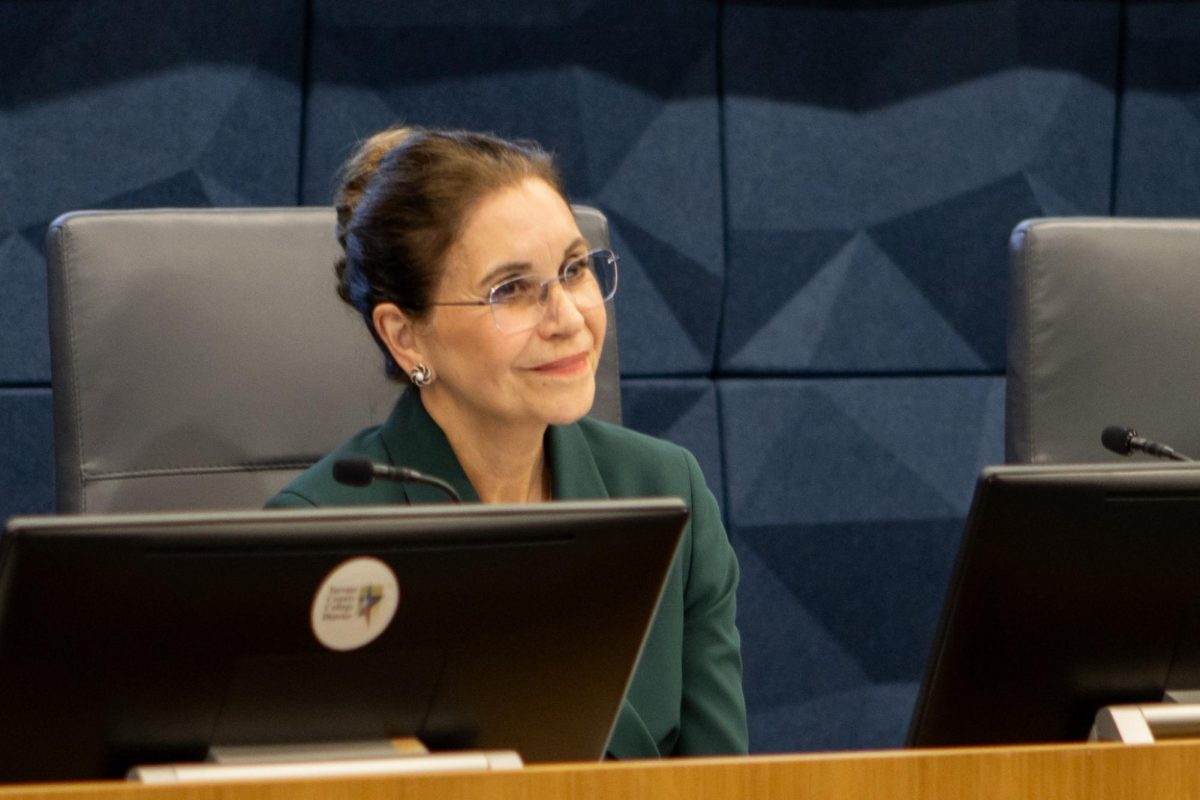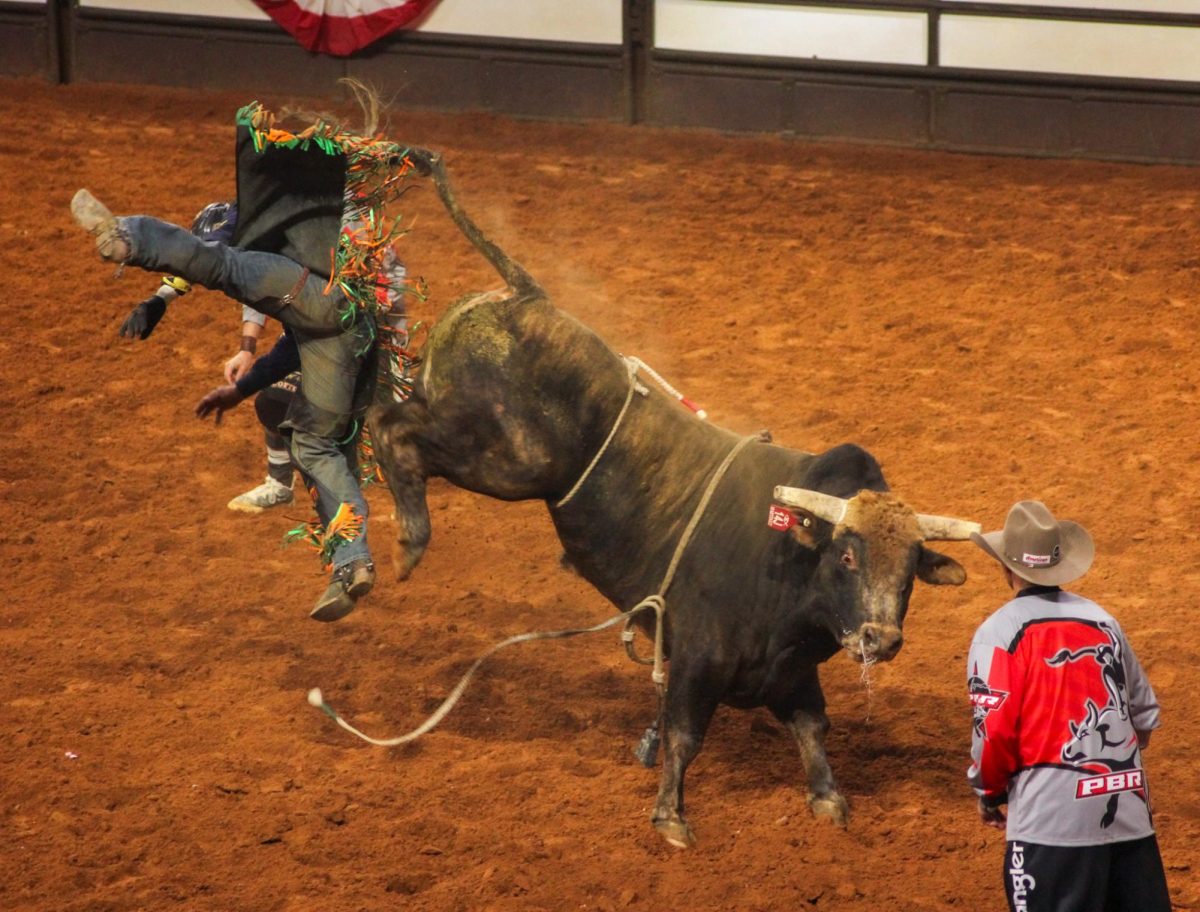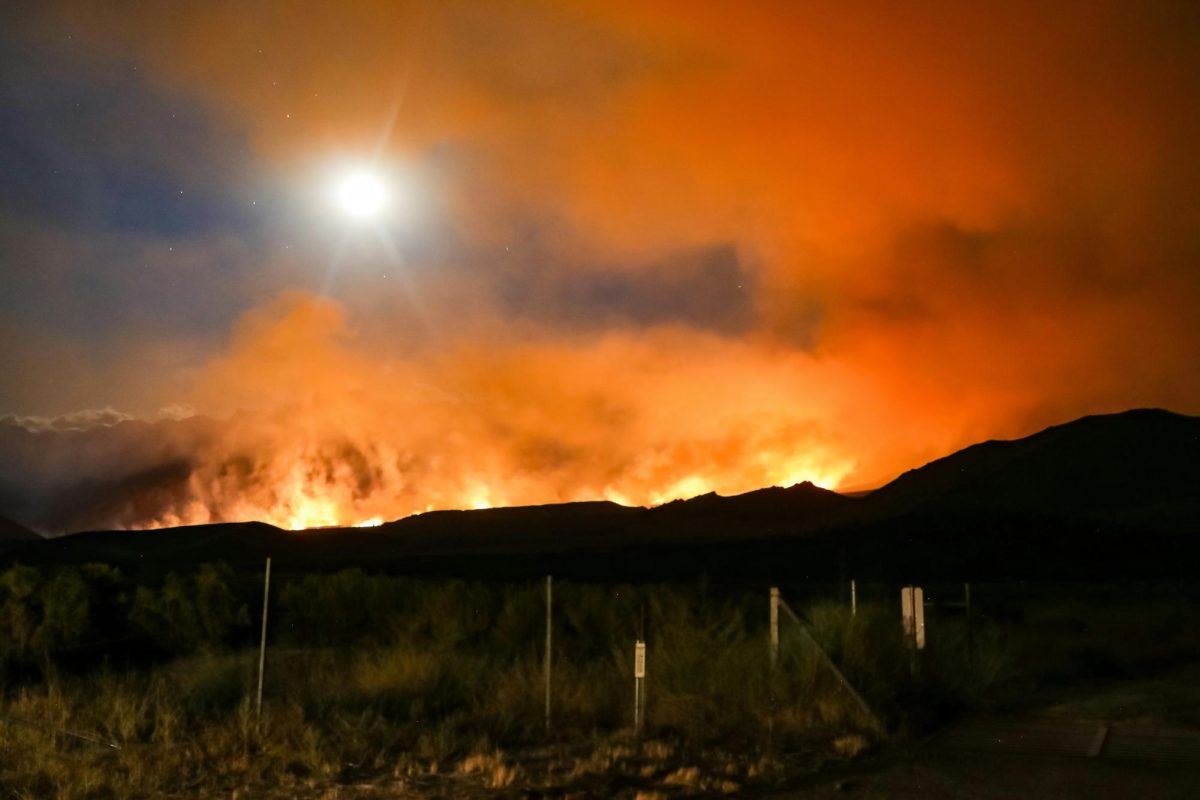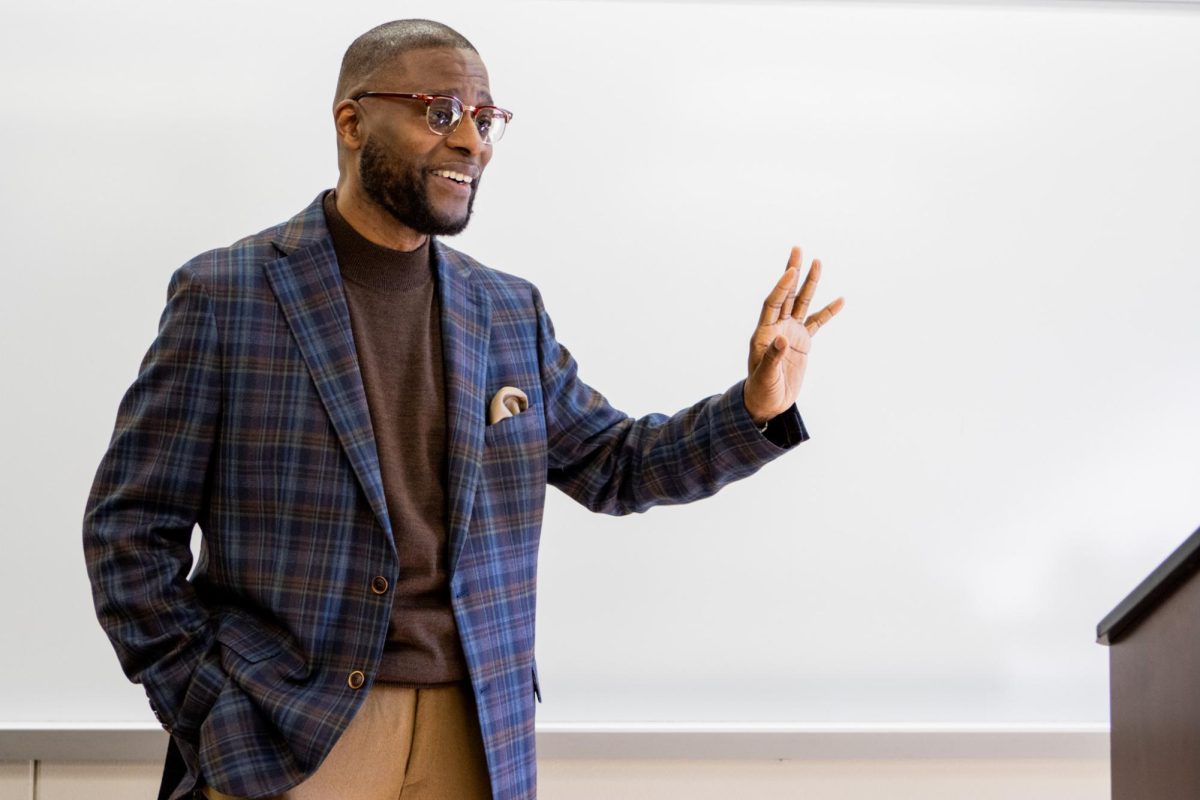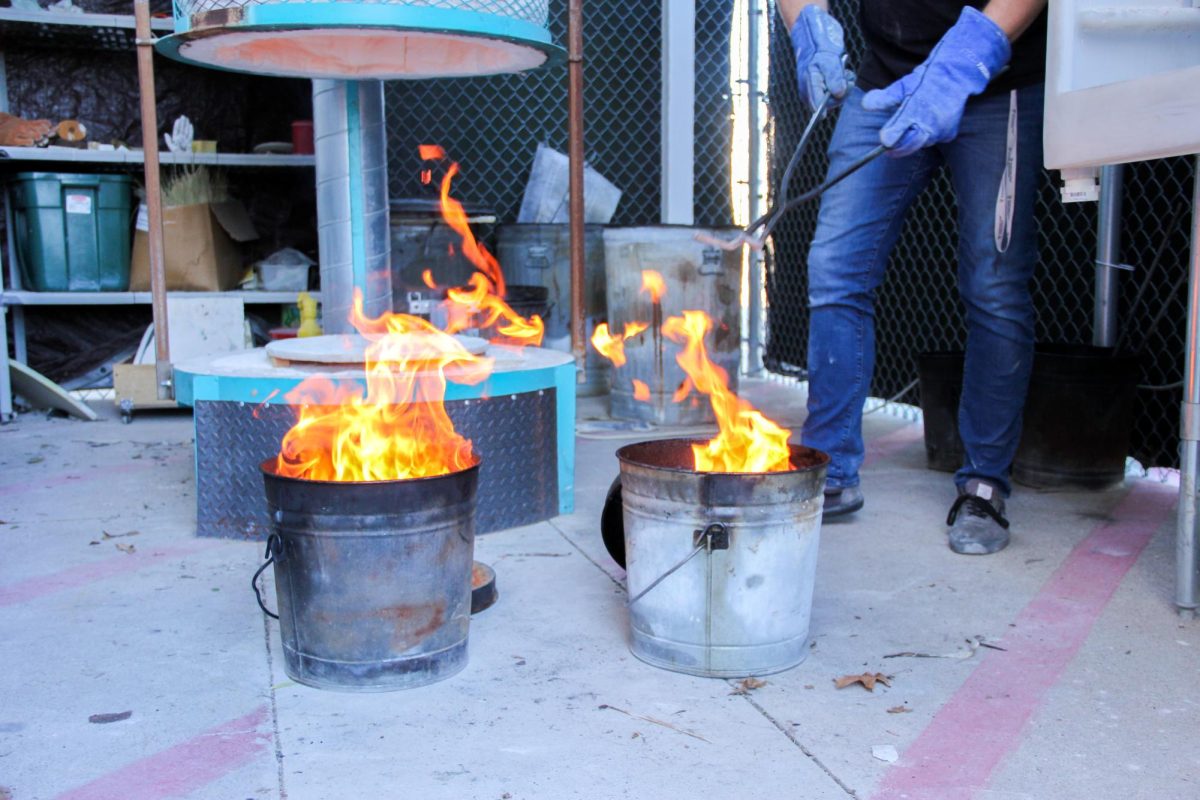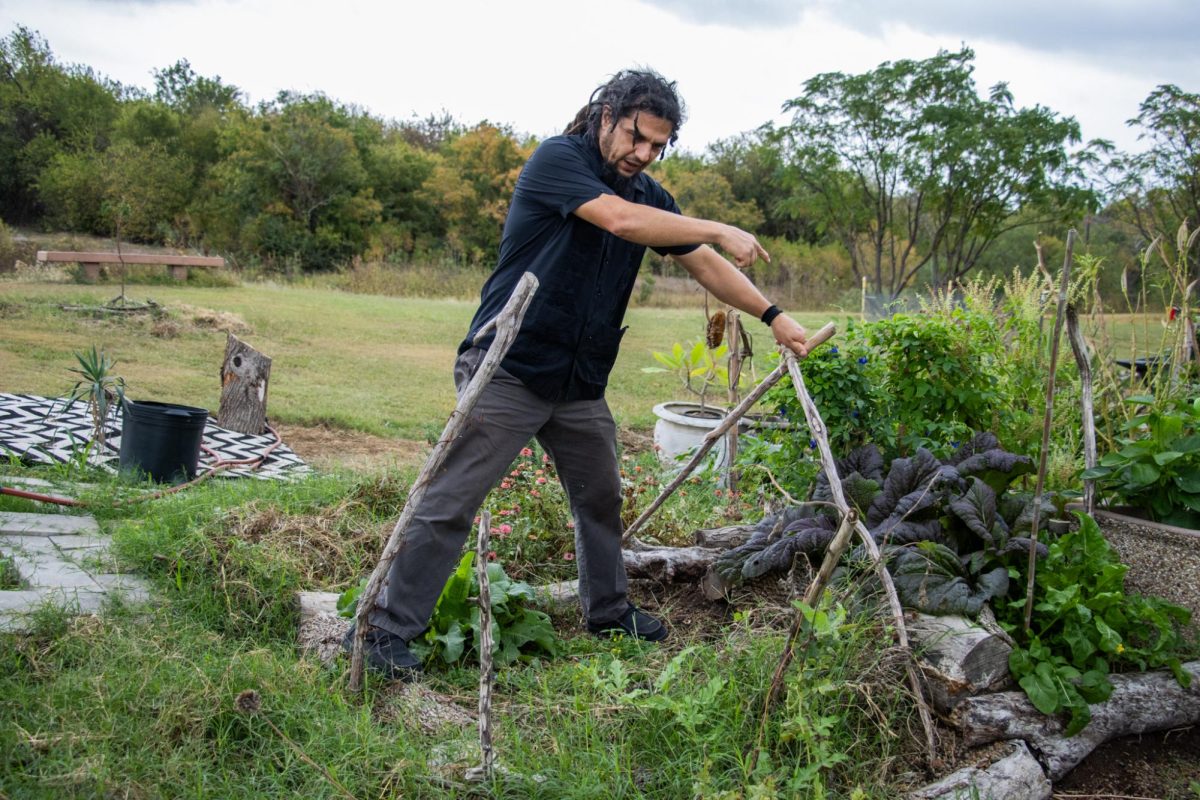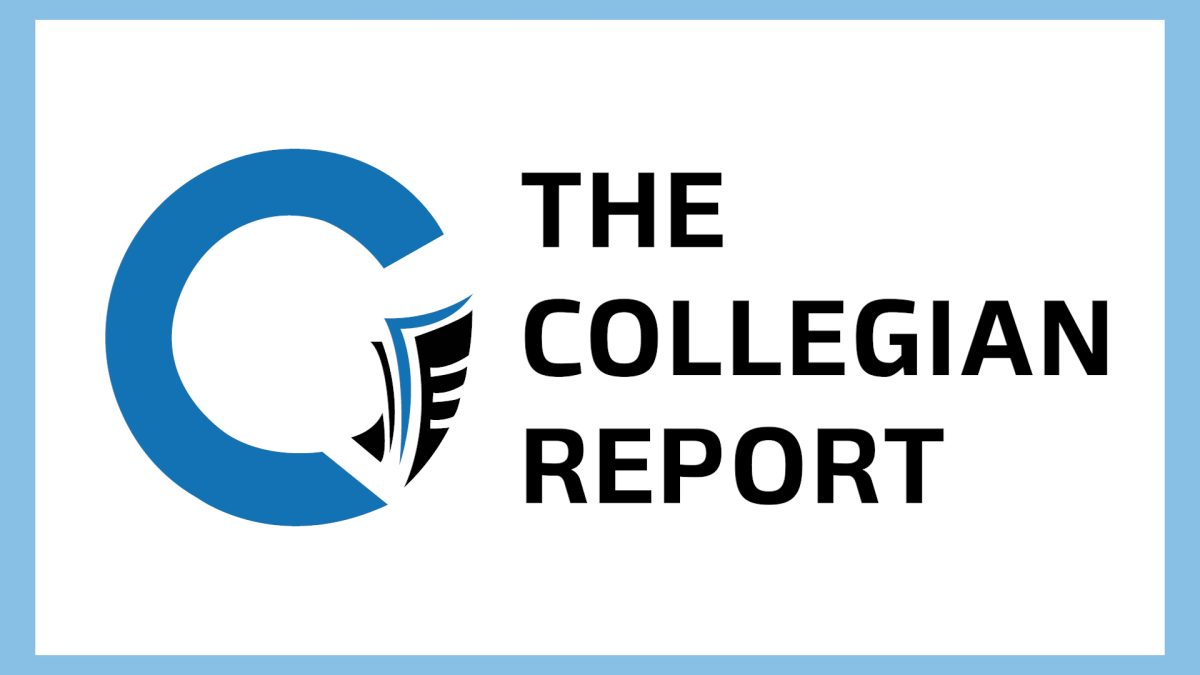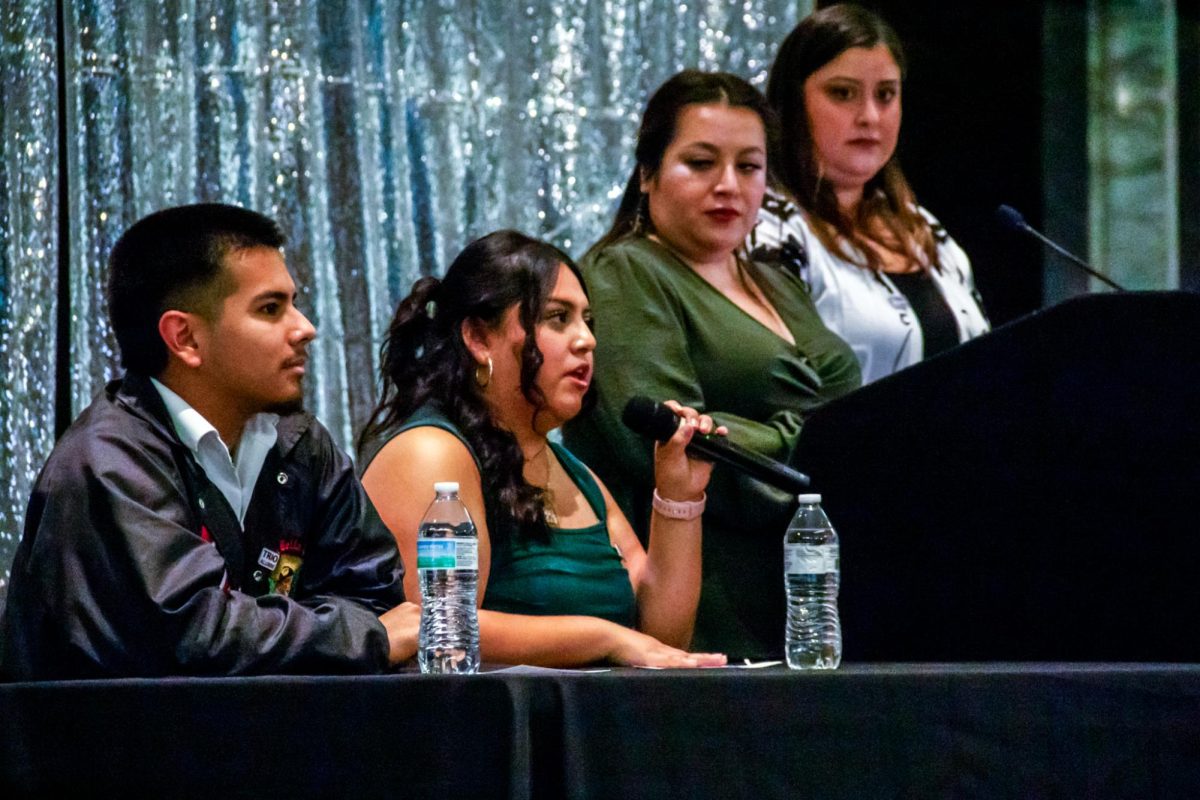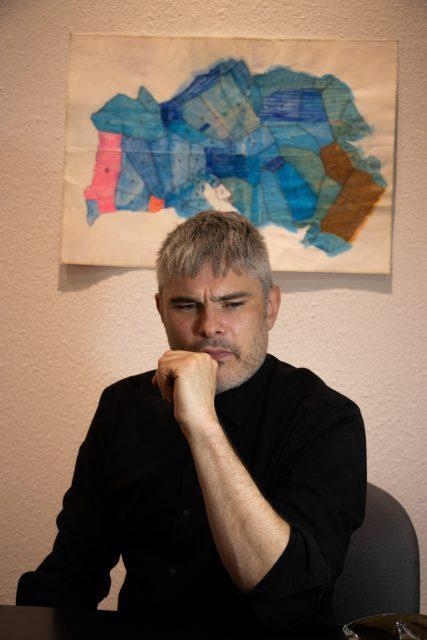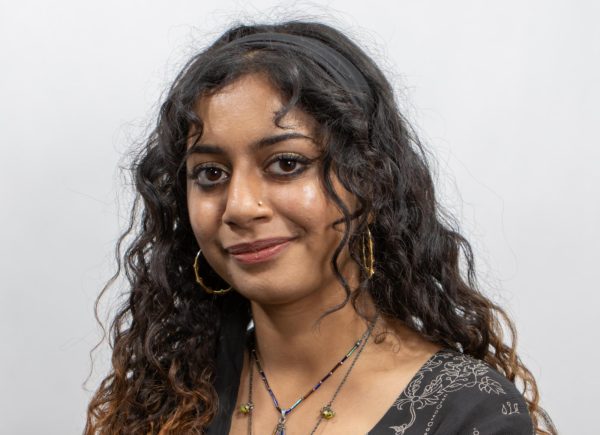
The experience of living near the border threads together the artwork of five women connected by their visions of the desert in the “The Desert was Red and Red the Dust was Raised” exhibition, on display on South Campus until Feb. 20.
The conception of the gallery started with the curator, Leslie Moody Castro. She said she wanted to show off the artwork of women residing in the border region, a place with minimal opportunities for female artists.
She was having trouble piecing together the work of these artists with varying styles. One day she was reading “All the Pretty Horses” by Cormac McCarthy when she stumbled upon the quote: “The desert he rode was red and red the dust he raised.” That’s when she realized the location of the New Mexico desert was the connecting piece of each artist’s works.
“The desert dust sort of coats everything, and it’s always present, and it’s kind of this reddish color,” she said. “[Las Cruces is] quite a difficult area to be a full-time artist. It’s small. There’s not a whole lot of opportunities. You have to make a lot of opportunities.”
Castro said she utilizes red to hint at the rebellious act of five female artists succeeding in the tough landscape.
“I think we are moving into a political regime that does not value women or women’s work,” she said. “If there’s anything I can ever do to advocate for women’s work, in the art world and beyond, then I will do it.”
Creating freedom beyond borders

Stepping into the gallery reveals various colorful art pieces in different mediums, including a couple of almost 7-foot mixedmedia paintings on rice paper hanging from the ceiling by artist Isadora Jackson.
Jackson teaches painting, drawing, design and art history as a professor at El Paso Community College alongside her career as an artist. Her work in this exhibition consists of large pieces of rice paper sewn together with different layers of painting and drawing on top of it. She said the process of creating the work was freeing and joyful.
“We live on the border,” she said. “We have all these delineations. But how do you push through those? How do you create your own reality? That was kind of the inspiration for this work, and I wanted to branch out into something I hadn’t done. And this was the kind of safe, supportive space to kind of debut that work.”
Nature, mathematics are intertwined
Zoe Spiliotis is also an art professor at El Paso Community College and has her work displayed in the exhibit. Her works use mathematical principles in their compositions including symmetry and reflections.
Her work depicts various natural elements such as the moon, sun and birds. She said the meaning of the work can be different for each viewer. Looking at different parts of it such as the colors and shapes can cause the context and meaning to change.
“It’s like a larger kind of philosophical thing, that we see things from one perspective, our own, but it’s hard to put ourselves in somebody else’s shoes,” she said. “So, when you are focused just on shapes and colors, that transition can really happen.”
Art is impacted by politics
Artwork by Sharbani Das Gupta in the exhibition consists of two suspended discs made of glass and bullet-perforated iron scrap along with a couple of multimedia works. The work with the suspended discs is called “Assaulted Earth” and was inspired by the George Floyd protests.
“I was thinking about the after effect of conflict and how what we are left with as humans is really sorrow and the weight of tears,” she said.
Gupta was born in India but has lived in New Mexico for the last 25 years. She was trained as a graphic designer but transitioned to working primarily with clay.
“It’s been interesting working here on the border, where we talk about so many issues that connect to my life as an outsider; becoming part of another country, assimilating, learning to live as an immigrant and yet still maintaining a very close contact and connection to my home country,” she said.
Experimenting with landscapes
Amy Vensel is an artist in the exhibition who is inspired by the landscape around her. When she settled in New Mexico after moving from the East Coast, she found beauty in the desert.
“Out here, I can see the sky and the light, and that feeds into the colors in my work,” she said. “If you look at the paintings, you might be reminded of the soft gradients of color of sunset or rays, of light filtered by clouds.”

Vensel tapes off her paintings into different sections and works on each section independently, experimenting with color, shape and texture.
“I’m setting up a puzzle for myself in which I create something unknown and then figure out how to make sense out of it,” she said.
When looking at her work, Vensel intends for the viewer to see it as experience rather than hint at any sort of meaning. She embraces the undefined quality of abstract work.
“It’s sort of like an unknown that people can agree on that they’re drawn to like how people are drawn to interesting clouds,” she said. “It’s more of a universal feeling. I like that idea that you might not know what it is, but it’s exciting to you, and you like it, and you’re drawn to it.”
The process of making art is magical for Vensel and she said anything can happen when she starts creating.
“I don’t have a preconceived notion of what I’m going to make,” she said. “When I start a painting, it’s usually I just start with a color. It is endlessly surprising and fascinating what happens.”
Finding joy and purpose through art
Jackson said she wants people to experience joy as they look at the artwork. She wants to give them a moment of reprieve as the world becomes harder.
“I’m trying to do that with the color, with the brush strokes, with the shapes,” she said. “I’m trying to meet this kind of atmosphere and universe in the work that helps people feel like they can enter it and it’s this place that that keeps you and holds you.”
Spiliotis used to teach drawing and art appreciation at TCC South Campus in the past. She said it was exciting to loop back to where her professional career started. Her advice to students is to remain true to themselves and find their own voice.
“You can’t chase what’s popular or chase trends,” she said. “You really have to find your own way of creating and making art, and that is what will sustain you over your career, and it’s going to be what’s most fulfilling.”






